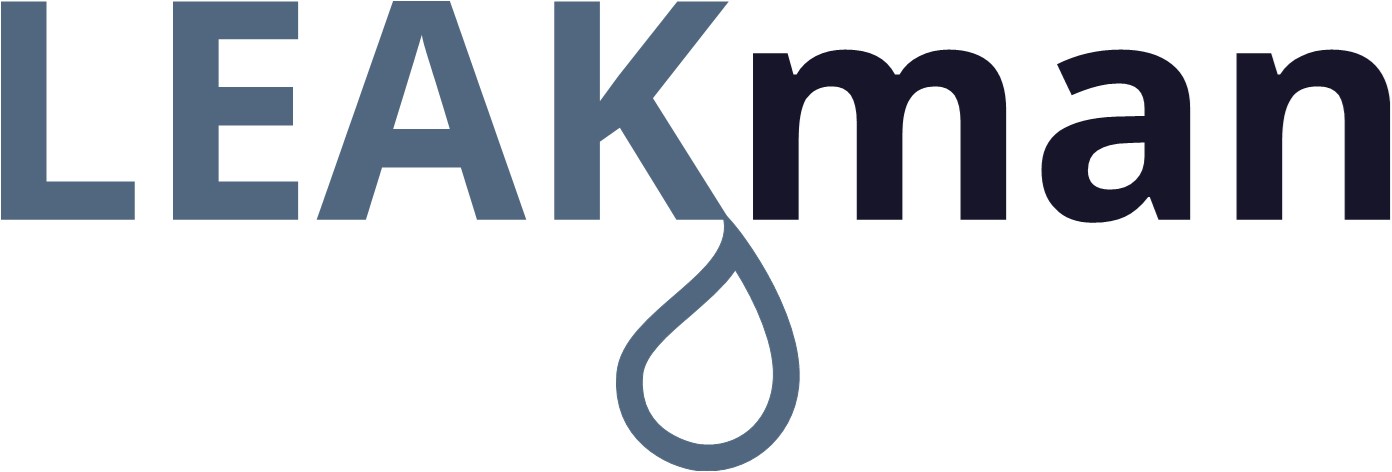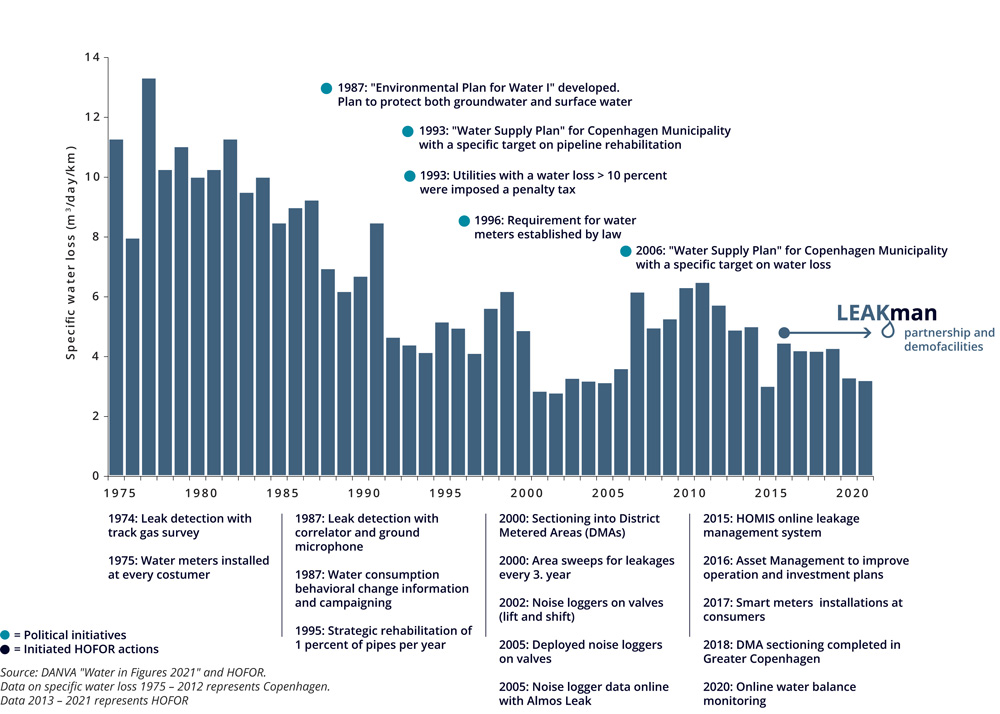

How water losses were reduced by 75 percent between 1977 and 2021 in Copenhagen, Denmark
The City of Oslo’s drinking water comes from the nearby lakes of Maridalsvannet (photo) and Elvåga. From here, the City of Oslo uses around 100 million cubic metres of water for the city’s drinking water supply. Photo by: Wilhelm Joys Andersen.
By means of innovation, new technologies and thorough leak detection methods, Greater Copenhagen Utility, HOFOR, has brought water losses in the capital of Denmark down to a minimum and sustainable level. HOFOR has succeeded in reducing specific water losses by more than 75 percent since 1977 where the water losses have been reduced from 13.3 m³/day/km main to 3.1 m³/day/km main corresponding to an overall reduction in NRW level from 9 to 5 percent.
This result is especially remarkable because 50 percent of the water pipes in Copenhagen are laid before 1945, 22 percent are more than 100 years old, and 55 percent of the pipes are cast iron.
HOFOR is one of the world’s leading utilities in reducing leakage. This is thanks to the way they combine multiple technologies and methods, including noise loggers and advanced microphones, meters installed at every customer, hydraulic models, capacity building programnes as well as sectioning of the network into District Metered Area (DMAs), and online water balance monitoring on DMA level.
HOFOR has at present completed the implementations of DMAs in the seven municipalities outside Copenhagen city centre.
Routine area sweeps
First and foremost, in-depth knowledge on system conditions is vital. For instance, HOFOR reviews the entire pipeline network of the capital every third year. Leaks are identified by listening for leak noise at selected valves at strategic locations using advanced sound detecting equipment.
Furthermore, applying condition assessments from scheduled maintenance is an important part of the renovation strategy. This way Greater Copenhagen Utility is able to initiate repairs in time to prevent failure and thereby avoid massive water losses. This is especially crucial in the older areas of the city, as the 100-years old streets are at risk of collapsing if an underground leak is not identified and fixed in time.
HOFOR has installed permanently deployed noise loggers in such high-risk areas of the city as an important part of the active leakage control strategy. The noise loggers automatically deliver data every day to assist in early identification of potential leaks.
A change in leakage management strategy
During the last decade Greater Copenhagen Utility has changed the leakage management strategy from manual scheduled leakage surveys at regular intervals to active leakage control by combining multiple data sources, SCADA, smart metering, hydraulic models and noise loggers. Data from all systems are integrated in the online management information system, HOMIS. By integrating data from different systems, the utility is able to identify and target the weakest areas and pipeline segments, as well as quickly and automatically locate leaks and prioritise which leaks to be repaired first. This change in strategy optimises both operations, maintenance and the human resource management.
Innovation as a cornerstone
To achieve a “smart” water distribution system, utilities need hardware and software technology, investment programs as well as operational experiences to come together and create a system to manage the utility in an intelligent way.
One of the reasons the NRW level at HOFOR is one of the lowest in the world is that the utility is always looking for new technology and solutions that can support the ongoing leakage management strategy. One of the goals for HOFOR is to strengthen the digital transformation as tool for further optimisation. As a LEAKman partner HOFOR is aiming at connecting knowledge and operation.
Courtesy: Leif Koch NIRAS and HOFOR
“The interaction between data from remotely-read smart meters, SCADA, noise loggers and other components in HOMIS enables us to direct our leakage detection activities to the most relevant areas and prioritise our resources“
– Kristiane Østergaard Jensen
HOFOR Greater Copenhagen Utility

